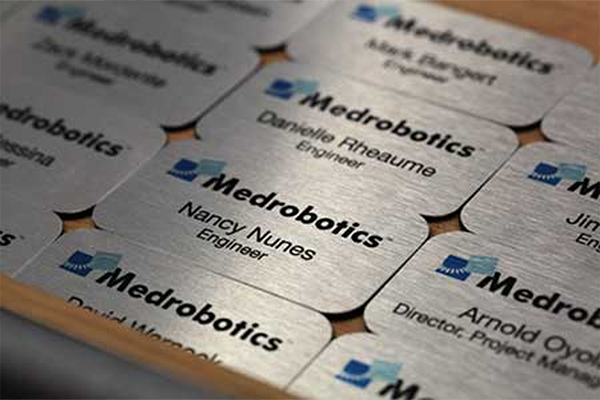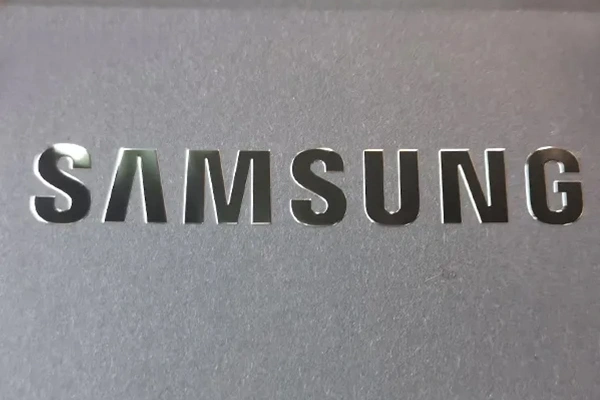Himgo delivers high-quality, cost-effective metal nameplates for you.
Introduction
Metal labels are durable, versatile identification plates widely used across industries for branding, product identification, and compliance. They offer a professional appearance, high resistance to wear and environmental factors, and the flexibility to be customized for various applications. In this guide, we explore the definition of metal labels, their types, key features, and industry applications.(Metal labels Electronics & Appliances Industry Applications)
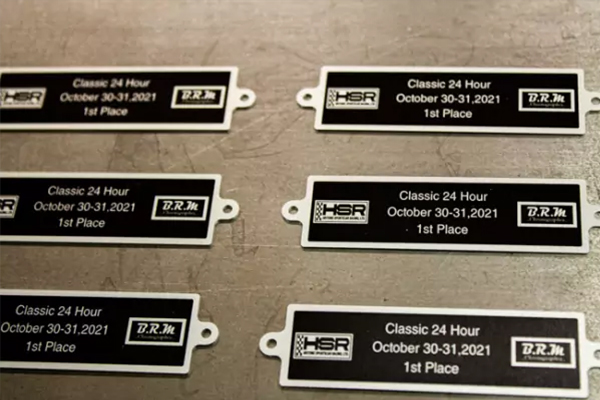
Definition of Metal Labels
What is a Metal Label?
A metal label is a plate made from metals such as aluminum, stainless steel, or nickel, designed to display information, logos, or serial numbers. Unlike paper or plastic labels, metal labels provide superior durability and longevity, making them ideal for long-term use in industrial, automotive, and consumer applications.
Components of a Metal Label
Metal labels typically consist of three main components:
Base Material – Aluminum, stainless steel, nickel, brass, or copper.
Surface Finish – Brushed, polished, anodized, or coated for protection.
Mounting Method – Adhesive backing, rivets, screws, or magnetic mounts.
Importance in Product Identification
Metal labels are critical for traceability, regulatory compliance, and brand recognition. They ensure that products can be accurately identified, tracked, and distinguished from competitors, while also conveying a sense of quality and professionalism to end users.
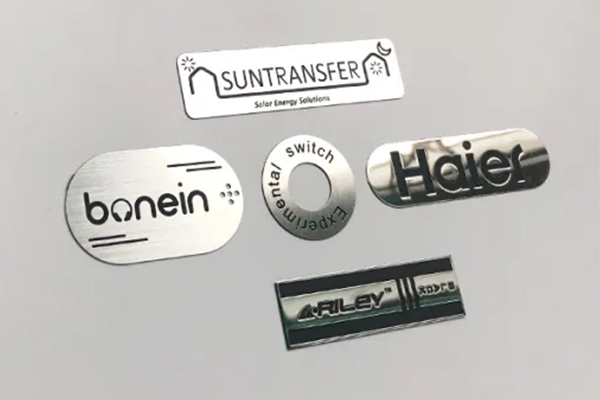
Types of Metal Labels by Material
Aluminum Labels
Aluminum labels are lightweight, corrosion-resistant, and cost-effective. They are commonly used in electronics, packaging, and general consumer goods. Aluminum can be anodized or printed to achieve a durable and attractive finish.
Stainless Steel Labels
Stainless steel labels offer exceptional strength, resistance to corrosion, and the ability to withstand harsh environments. They are often used in industrial machinery, automotive parts, and outdoor equipment. Brushed or polished finishes enhance the aesthetic appeal while maintaining durability.
Nickel, Brass, and Copper Labels
These metals are typically used for premium or decorative applications. Nickel, brass, and copper labels provide a luxurious appearance, excellent wear resistance, and a variety of engraving or embossing options, making them ideal for high-end products and luxury packaging.(Metallurgy for Designers – Copper & Brass Applications)
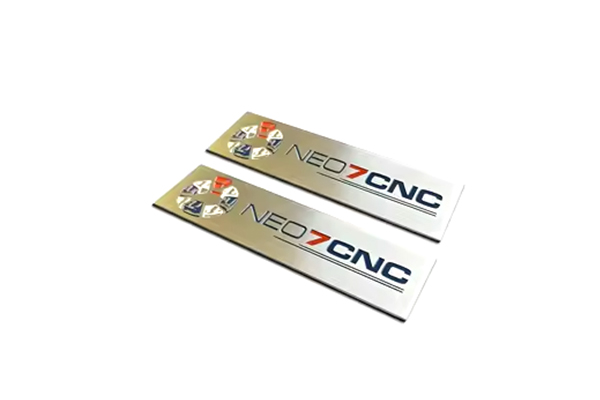
Types of Metal Labels by Manufacturing Process
Engraved Labels
Engraved metal labels are created using laser or mechanical engraving. This process removes material to form permanent text, logos, or designs. Engraved labels are highly durable and resistant to wear, ideal for industrial and outdoor applications.
Embossed / Debossed Labels
Embossing and debossing create raised or recessed designs on metal labels,(Printing Industries of America) adding a tactile 3D effect. These labels are commonly used for luxury branding, automotive emblems, and decorative applications.
Printed Labels
Printed metal labels utilize digital, pad, or screen printing techniques to apply colors, logos, and text. They allow full-color customization and are widely used in packaging, consumer electronics, and promotional products.
Hybrid & Specialty Methods
Hybrid methods combine engraving and printing for enhanced durability and aesthetic effects. Specialty coatings and protective layers can improve resistance to corrosion, scratches, and UV exposure. Custom prototyping ensures labels meet specific requirements.
Key Features and Properties of Metal Labels
Durability and Strength
Metal labels resist corrosion, temperature extremes, UV exposure, and mechanical wear. They last longer than plastic or paper alternatives, ensuring reliable identification and branding over time.
Design Flexibility
Labels can be custom-sized, shaped, and layered. Designers can choose from 3D embossing, color coatings, and textured finishes to match brand requirements and aesthetic preferences.(ISO 17800 – Industrial Equipment Labeling Standards)
Adhesive and Mounting Options
Metal labels can be self-adhesive, riveted, screwed, or magnetic, depending on the application. This versatility ensures secure attachment to a wide range of surfaces, including curved or irregular objects.
Maintenance and Longevity
Proper maintenance involves gentle cleaning and avoiding abrasive chemicals. With correct care, metal labels can last for decades, making them a cost-effective solution for long-term product identification.
![]()
Applications and Industry Use Cases
Electronics Industry
Metal labels are used for device identification, serial numbers, and logo plates. They ensure compliance, traceability, and a professional appearance for electronic products.
Automotive Industry
Car badges, engine identification plates, and compliance labels are often made of stainless steel or aluminum. They provide durability in harsh environments and enhance brand recognition.
Industrial & Manufacturing
Metal labels are essential for machinery nameplates, safety instructions, and asset tracking. They withstand extreme temperatures, chemicals, and mechanical stress.
Luxury and Consumer Goods
High-end packaging, decorative labels, and limited-edition products use nickel, brass, or copper labels to convey premium quality and craftsmanship.
Specialized Applications
Aerospace, medical devices, and equipment used in extreme environments rely on metal labels for traceability, compliance, and durability.

Comparison Table: Common Metal Label Materials
| Material | Durability | Typical Applications | Surface Finish Options |
|---|---|---|---|
| Aluminum | Medium | Electronics, Packaging | Anodized, Printed |
| Stainless Steel | High | Automotive, Industrial | Brushed, Polished |
| Nickel | High | Luxury Products | Engraved, Embossed |
| Brass / Copper | Medium-High | Premium Branding | Embossed, Color Coating |
FAQ
What are metal labels?
Metal labels are durable plates made from metals like aluminum, stainless steel, or nickel, used for product identification, branding, and compliance.Which metal is most durable for outdoor labels?
Stainless steel is ideal for outdoor applications due to its high corrosion and weather resistance.Can metal labels be customized?
Yes, metal labels can be engraved, embossed, printed, or coated in custom colors and shapes, with adhesive or mounting options tailored to your needs.How long do metal labels last?
With proper maintenance, metal labels can last decades, depending on the material and environmental conditions.Are metal labels suitable for luxury products?
Nickel, brass, and copper labels provide a premium look and feel, perfect for high-end branding and decorative applications.


